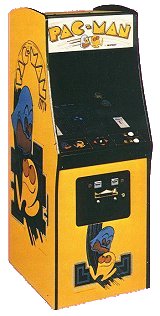
 The Game: As a round yellow creature consisting of a mouth and nothing else, you maneuver around a relatively simple maze, gobbling small dots (10 points) and evading four colorful monsters who can eat you on contact. In four corners of the screen, large flashing dots (50 points) enable you to turn the tables and eat the monsters for a brief period for an escalating score (200, 400, 800 and 1600 points). Periodically, assorted items appear near the center of the maze, and you can consume these for additional points as well. The monsters, once eaten, return to their home base in ghost form and return to chase you anew. If cleared of dots, the maze refills and the game starts again, but just a little bit faster… (Bally/Midway [under license from Namco], 1981)
The Game: As a round yellow creature consisting of a mouth and nothing else, you maneuver around a relatively simple maze, gobbling small dots (10 points) and evading four colorful monsters who can eat you on contact. In four corners of the screen, large flashing dots (50 points) enable you to turn the tables and eat the monsters for a brief period for an escalating score (200, 400, 800 and 1600 points). Periodically, assorted items appear near the center of the maze, and you can consume these for additional points as well. The monsters, once eaten, return to their home base in ghost form and return to chase you anew. If cleared of dots, the maze refills and the game starts again, but just a little bit faster… (Bally/Midway [under license from Namco], 1981)
Memories: It began in 1979 when a young Namco game designer named Toru Iwitani made his fourth video game. Fascinated with pinball, Iwitani had created a series of games combining pinball physics with Breakout-style brick-busting elements, and while Gee Bee, Bomb Bee and Cutie Q were moderate successes for Namco, enough to keep Iwitani employed and developing new titles, the designer himself was finally ready to move beyond video pinball. Cutie Q was one of the first hints as to Toru Iwitani’s next project, with its colorfully cartoony monsters. With a small team of developers at his disposal, Iwitani – supposedly inspired by the shape of a pizza with one slice removed – set about creating a new game with nearly universal appeal. [read more]
 The Game: It’s like pinball, but not quite. Not only are the bouncing-ball physics and bumpers of pinball present, but so are walls of bricks which, when destroyed, add to your score and sometimes redirect your ball in unpredictable directions. Pinball meets Breakout. (Namco, 1978)
The Game: It’s like pinball, but not quite. Not only are the bouncing-ball physics and bumpers of pinball present, but so are walls of bricks which, when destroyed, add to your score and sometimes redirect your ball in unpredictable directions. Pinball meets Breakout. (Namco, 1978)
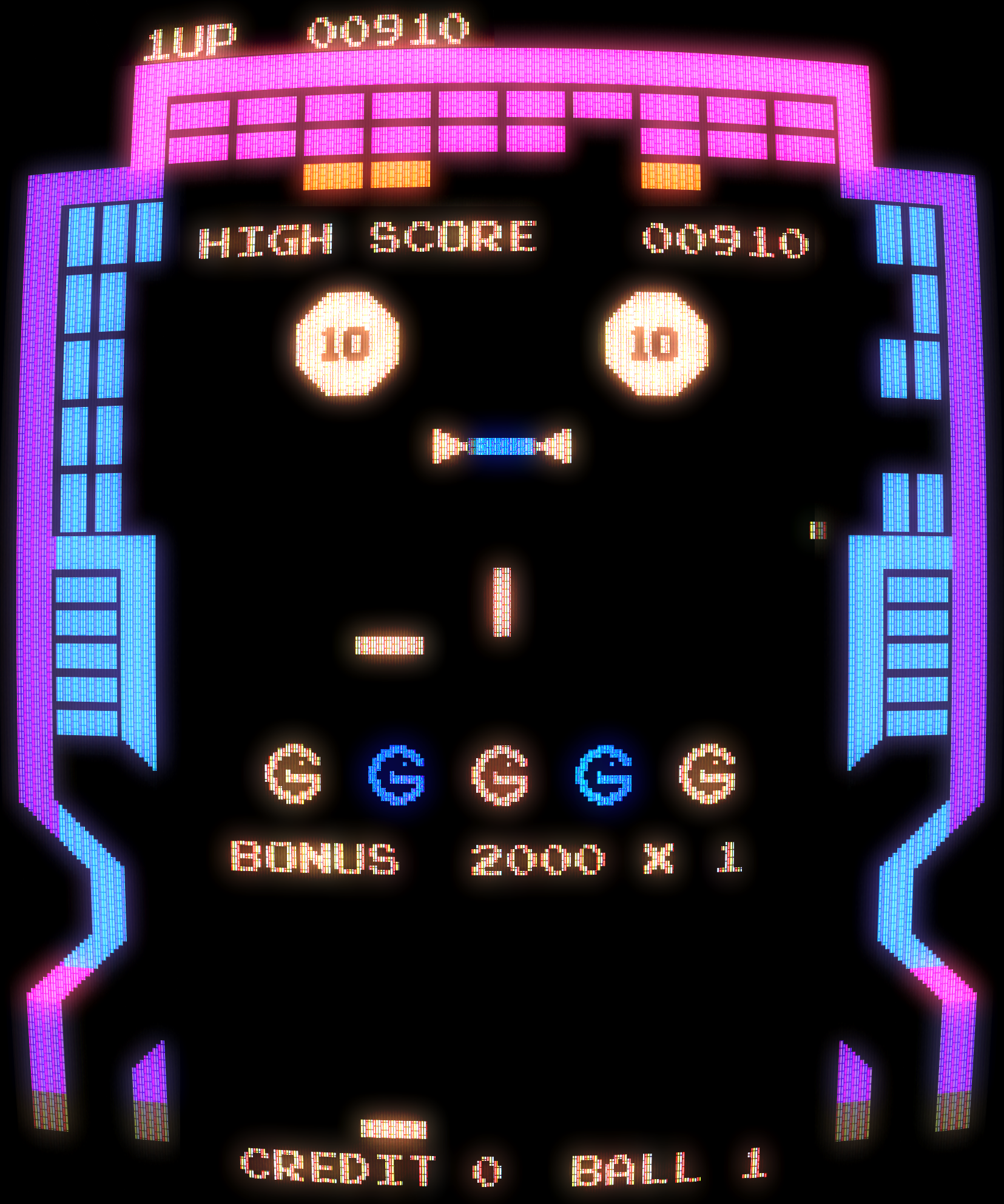
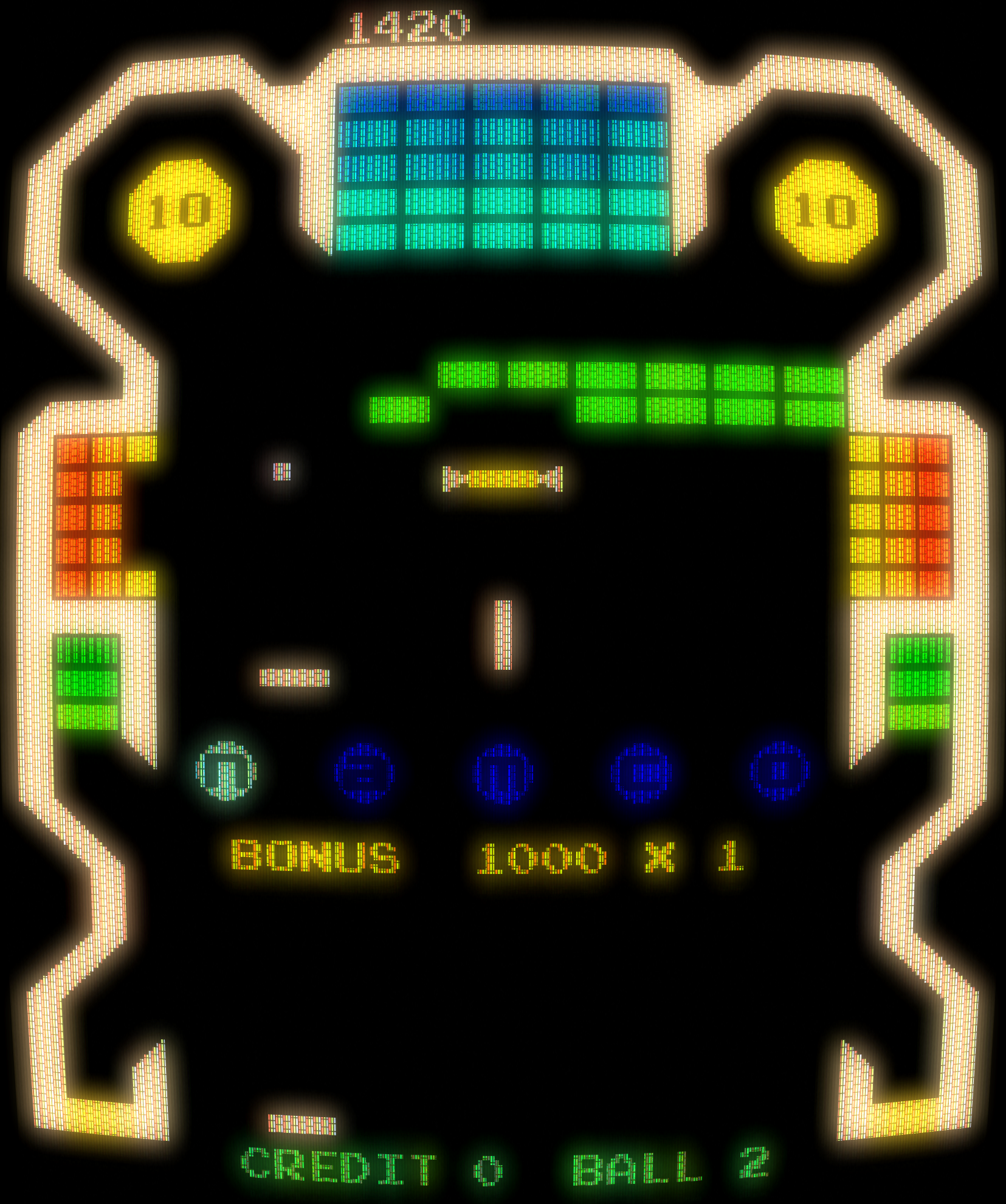
 The Game: Video pinball is back, and now in more than one color! Bomb Bee takes the game mechanics of Gee Bee and makes them noisier and brighter, adding “bumper traps” that can keep the ball bouncing in tight cul-de-sacs, racking up massive bonus points with every strike. (Namco, 1979)
The Game: Video pinball is back, and now in more than one color! Bomb Bee takes the game mechanics of Gee Bee and makes them noisier and brighter, adding “bumper traps” that can keep the ball bouncing in tight cul-de-sacs, racking up massive bonus points with every strike. (Namco, 1979)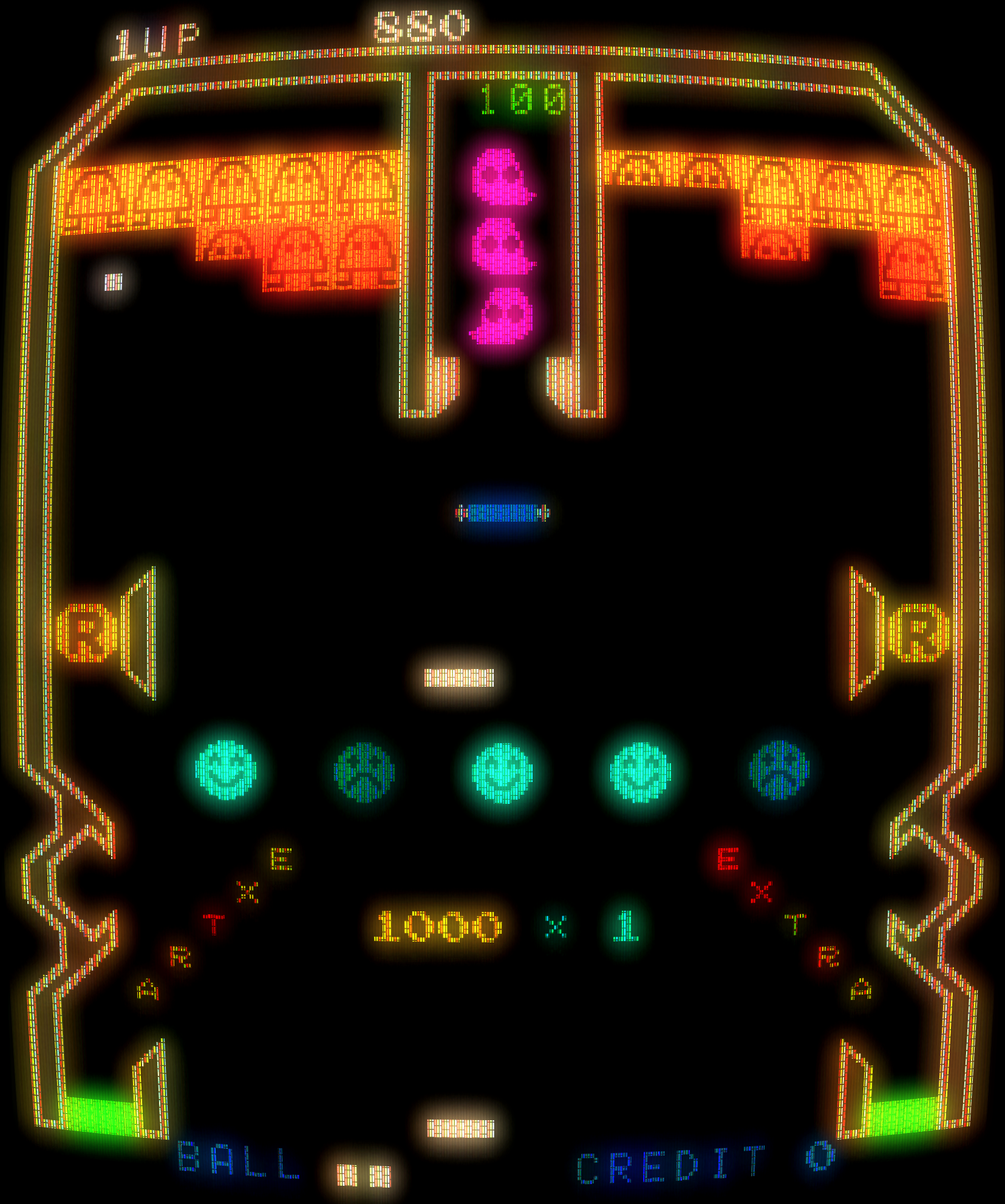
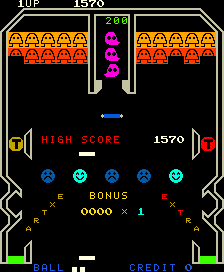

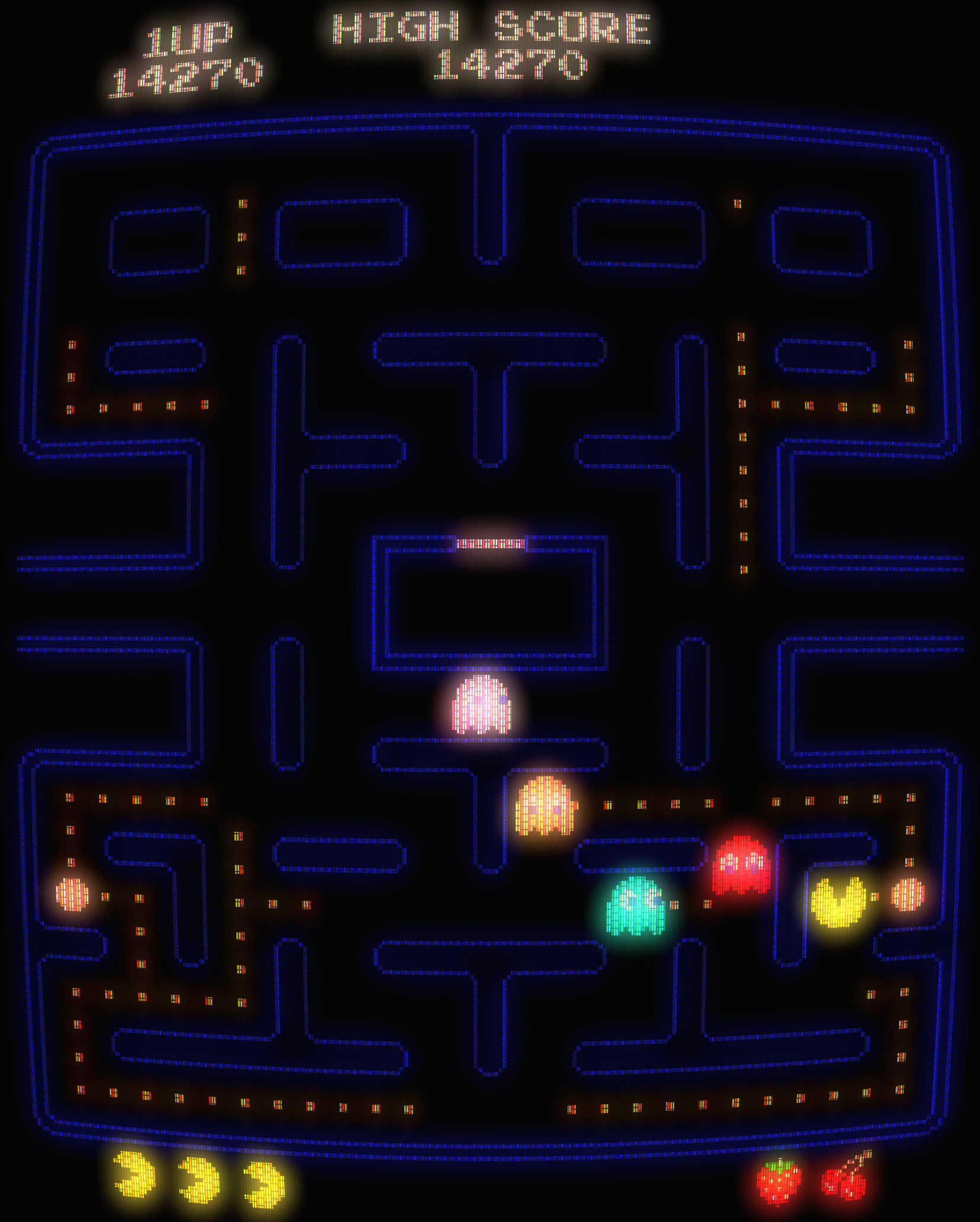

 The Game: In a peaceful garden dotted with a gridwork of posts, the player must simultaneously move two pointers, connected to each other by a tenuous string, to trap mobile mushrooms and pointy-hatted garden gnomes. If either pointer comes into contact with a gnome, a life is lost (and, for the record, it’s not the gnome’s life). A scissor-like critter occasionally crosses the screen, and he’s capable of severing the string; a new one instantly forms between the two pointers, but any progress that was made in creating a trap with the string is lost. When all of the creatures invading the player’s garden are trapped, the game begins again at a higher difficulty level; if all of the player’s lives are lost, or time runs out, the game is over. (Namco, 1983)
The Game: In a peaceful garden dotted with a gridwork of posts, the player must simultaneously move two pointers, connected to each other by a tenuous string, to trap mobile mushrooms and pointy-hatted garden gnomes. If either pointer comes into contact with a gnome, a life is lost (and, for the record, it’s not the gnome’s life). A scissor-like critter occasionally crosses the screen, and he’s capable of severing the string; a new one instantly forms between the two pointers, but any progress that was made in creating a trap with the string is lost. When all of the creatures invading the player’s garden are trapped, the game begins again at a higher difficulty level; if all of the player’s lives are lost, or time runs out, the game is over. (Namco, 1983)